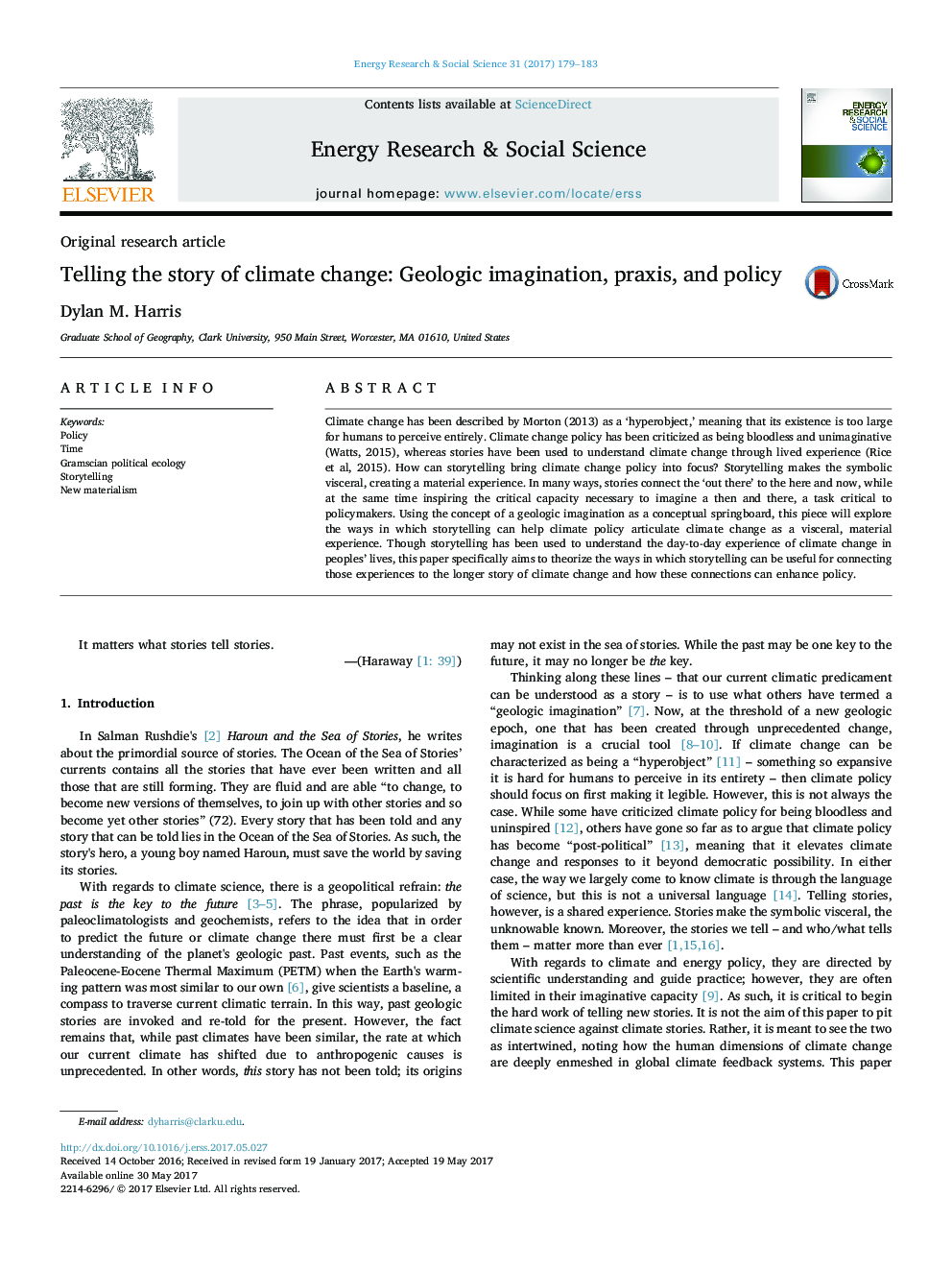| Article ID | Journal | Published Year | Pages | File Type |
|---|---|---|---|---|
| 6463855 | Energy Research & Social Science | 2017 | 5 Pages |
Climate change has been described by Morton (2013) as a 'hyperobject,' meaning that its existence is too large for humans to perceive entirely. Climate change policy has been criticized as being bloodless and unimaginative (Watts, 2015), whereas stories have been used to understand climate change through lived experience (Rice et al, 2015). How can storytelling bring climate change policy into focus? Storytelling makes the symbolic visceral, creating a material experience. In many ways, stories connect the 'out there' to the here and now, while at the same time inspiring the critical capacity necessary to imagine a then and there, a task critical to policymakers. Using the concept of a geologic imagination as a conceptual springboard, this piece will explore the ways in which storytelling can help climate policy articulate climate change as a visceral, material experience. Though storytelling has been used to understand the day-to-day experience of climate change in peoples' lives, this paper specifically aims to theorize the ways in which storytelling can be useful for connecting those experiences to the longer story of climate change and how these connections can enhance policy.
